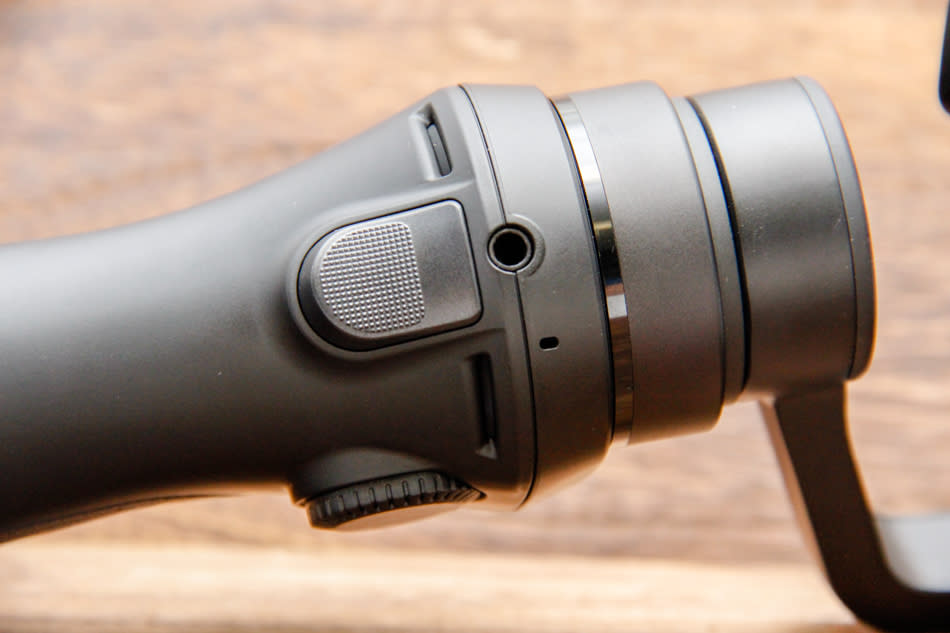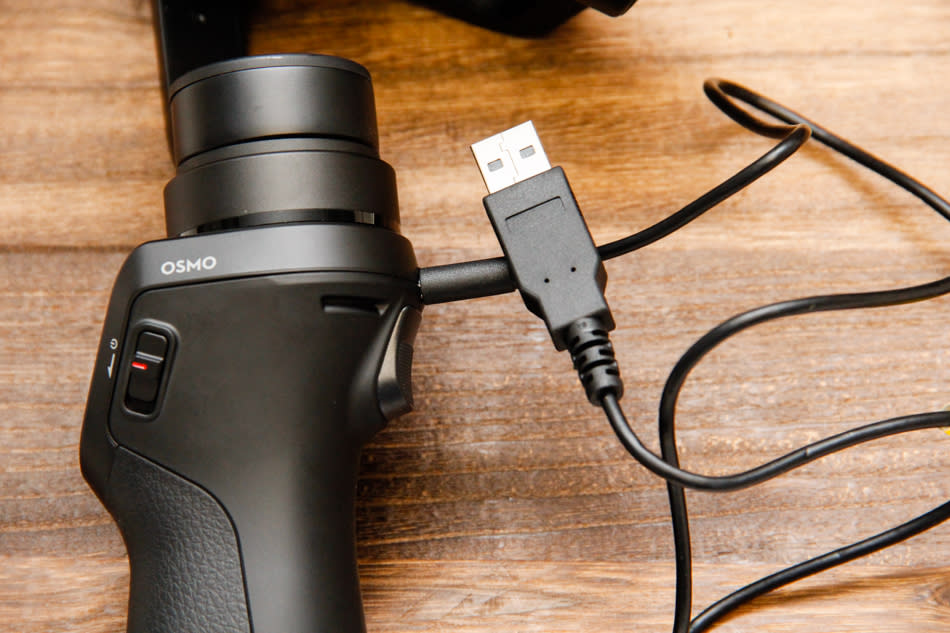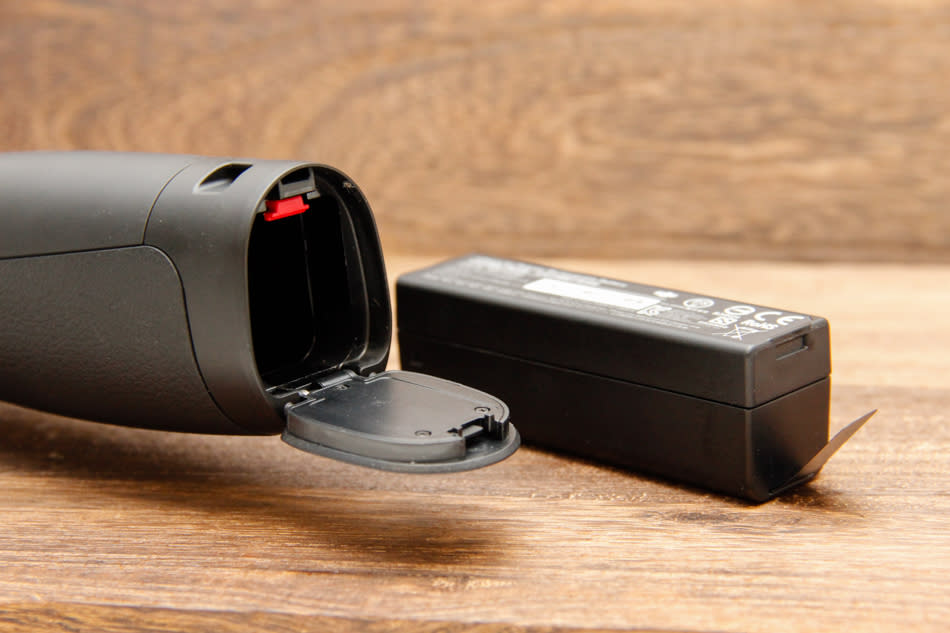DJI Osmo Mobile review: Make your smartphone videos steadier than the Bourne movies
Note: This article was first published on 27th September 2016 and republished again as it's a popular gadget and read.
Shaky handheld footage has afflicted videomakers since the dawn of time. It’s either a surefire sign that you’re an amateur who doesn’t know what you’re doing or you’re acclaimed director Paul Greengrass. Systems to help stabilize handheld video range from big rigs you strap onto your body, and smaller handheld solutions, like the Osmo, and now the Osmo Mobile.
The DJI Osmo Mobile is a handheld gimbal for your smartphone camera, letting you record stable and smooth video, as well as shoot time-lapse videos and still photos with long shutter speeds. The Mobile also brings ActiveTrack, subject-tracking technology from the Phantom 4 drone, to the Osmo series.
If it looks familiar, the Osmo Mobile is basically the Osmo without its 4K camera. That halves the price, from US$609 to US$299, and also lightens the load. Whereas you had to mount a smartphone to serve as the Osmo 4K camera’s viewfinder, on the Mobile the smartphone is the camera.
In fact, little has changed on the rest of the Osmo Mobile, except three things that you can’t see. The Osmo’s 3.5mm audio jack has been converted into a battery charger, you’ll need to use the special 3.5mm to USB cable that comes in the box to charge the Mobile. A USB power adapter isn’t included, however, which is a fault.


The second significant difference is battery life. The original Osmo drained its battery pretty quickly, but the Mobile can run up to four and a half hours using the same battery as the Osmo, because it’s not powering a video camera. It’s more likely that your smartphone will run out of juice before the Mobile does.
The third difference is that your smartphone now connects to the Mobile via Bluetooth, instead of Wi-Fi. So you can shoot and live stream at the same time (live streaming is not available on Android).

The Osmo Mobile is as easy to use as it gets. Mount your smartphone, turn it on, pair it, and it’s good to go. It stabilizes your smartphone even if you’re shooting with its default camera app, but using the Mobile with the DJI Go app unlocks more features, like motion time-lapse and ActiveTrack. You can start shooting with the Mobile by pressing the video or stills record buttons on the body, and triple-tapping on the front trigger conveniently switches between the smartphone’s front and back cameras.

The key new feature, ActiveTrack, promises to always keep your subject in the center of the frame, by moving the camera to follow him, her or it. It works by you drawing a green rectangle around the subject, which the Mobile will try to track. Besides tracking subjects, you can also track yourself by switching to selfie mode and drawing the rectangle around your face.
ActiveTrack worked whimsically for me. In some videos, it managed to track me even when I walked down a flight of stairs and swung the camera around me (the first sample video below). In other cases, it lost track just from me walking around (the second video below, around the 0:16 mark). From what I can piece together, ActiveTrack seems to work better with slower-moving subjects than fast ones, and subjects that tend to appear the same throughout the shot.
For example, when shooting myself in selfie mode, it didn’t appear sophisticated enough to recognize a face or facial features like eyes. Instead, it seems to target generic shapes, so when I draw a rectangle around my front-facing nose, it’ll be able to track me as long as I face the camera and it can track my nose’s triangular shape. But once I turn my face to the side, it can’t tell that it’s the same object in profile and loses focus. To its credit, it’ll keep trying to hunt for the subject, and once I turn my face back, it can usually lock back to my nose again.
You might notice that in the first video, the Osmo Mobile tends to lag behind when it’s tracking my face as I’m moving the camera around. I would have liked to see the same option to change the Mobile’s tracking speed, it’s an option that’s on the original Osmo. By default, the speed is a tad too slow here.
The Mobile’s key feature is its ability to stabilize, and it usually manages to turn usually shaky and nausea-inducing videos into smooth, perfectly usable videos. What it does best is prevent the unconscious, random hand-shakes and jitters that mar most smartphone videos, giving you a steady, moving shot that is otherwise impossible to achieve with handheld video.
In the samples below, the iPhone 6s Plus’ built-in OIS already stabilizes the video well when I walk across the shifting sand. In the second video, the Mobile manages to reduce the erratic hand movements that plague the first video.
The difference is more obvious in the following videos, where I walk on rocks. You can’t avoid the ‘stepping’ motion on both videos, but the Osmo Mobile’s video (the second) is firmer and steadier, making it easier to stomach.
The Mobile performs admirably in these two action stress tests. In the first, I jump off the stairs and run forwards; the Mobile keeps the motion smooth throughout. In the second, I jump up, down and around a table, and the video is surprisingly steady.
The Osmo Mobile takes your smartphone videos to a more professional level with its solid stabilization. It’s easy to pair, and easy to use, besides learning the double and triple-tapping trigger shortcuts, you don’t really need to read the manual to start shooting. What I’d like to see is ActiveTrack become more consistent in its performance, and gain more sophistication, with an ability to recognize faces and eyes. If ActiveTrack is the main feature you’d get the Mobile for, be prepared to go a few takes and/or wait for DJI to make it work better.
Now, while the Osmo Mobile is half the price of the original Osmo, it still isn’t that affordable that you can go and buy it on a whim for your home videos. And the product is pricier than some of the other brands on the market. But the way I think about it is that you’re paying for DJI’s expertise with professional gimbals and brand reliability when you fork up for the premium. And you’ll be able to get videos that look steadier than the Jason Bourne movies’ shaky cams.


